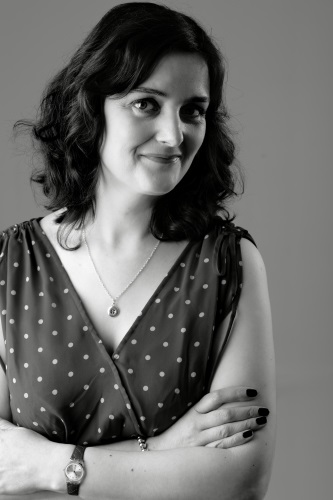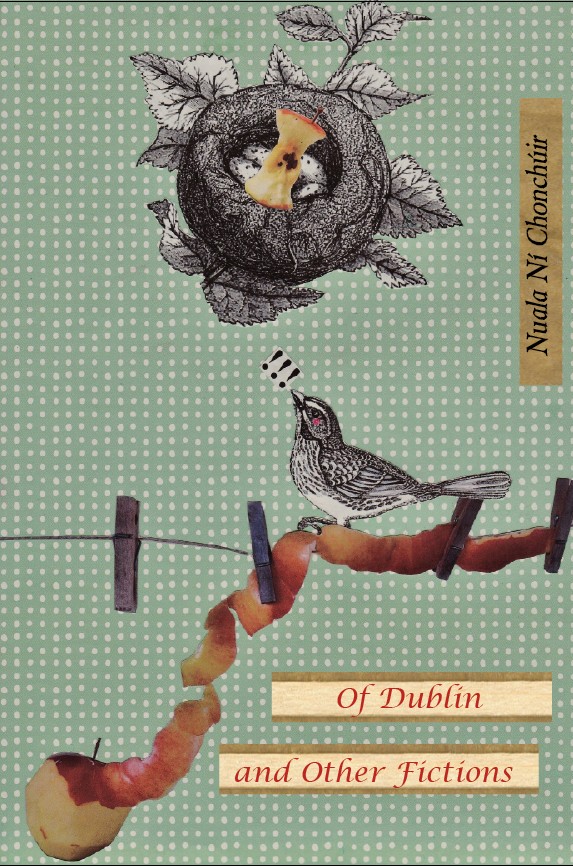
Welcome, Nuala Ní Chonchúir. Nuala lives in Galway. Her fourth short story collection Mother America was published by New Island in 2012. A chapbook of short-short stories Of Dublin and Other Fictions is just out in the US and Nuala’s second novel The Closet of Savage Mementos will be published in spring 2014 by New Island.
We’re here today to talk about Of Dublin and Other Fictions. Book buying info here.
I’m especially struck in several of these stories by personification and how convincingly and vividly you humanize the inanimate and bring it alive. For example, the moving and talking statue in “Jesus of Dublin” and the murmuring road in “The Road that Mills and Boon® Built”. Can you talk about this craft choice and in particular what you believe it brings to the stories?
In a way it is not a craft choice as such, it’s more that stories come to me in a certain way. I went to school on Marlborough Street in Dublin’s city centre, so the O’Connell Street Jesus statue has been part of my life since I was very young. I wondered what he’d say if he could talk and his voice arrived in my ear as a Noel Purcellesque rasp. It’s probably because I’m Irish, but the idea of a talking statue is not that crazy-seeming.
As for the Mills and Boon built road, that speaks like a Mills and Boon novel, that idea occurred to me the moment I was told that the A3 in England was partially built using those books. That’s a gift of an anecdote for a writer.
What does personification bring to the stories? A touch of surreal humour, I hope.
I also appreciated the many powerful moments throughout of voyeurism and the ensuing stolen moments of intimacy. I’m thinking in particular of characters like those in “Fish” and “Room 313” who feel compelled to trespass and to witness what they shouldn’t. These great moments made me think of the writer and our compulsion to push into the unseen and the hidden. Can you share your thoughts on your voyeuristic characters? Also, your thoughts on the writer as an intrusive “seer”.
The older I get the less brave I get in the real world (the dawning of sense – at last! Maybe…) so I guess I can live vicariously through these characters who are a bit more audacious than I am these days. The chambermaid in ‘Room 313’ tries on one guest’s slinky undies. When I worked in hotels as a student I would never have done that, but I will admit to spraying on the odd squirt of perfume. The chambermaid is always going to be less well off than the guests in a hotel so I was highlighting that – she was trying on Coco’s life for size.
In ‘Fish’ the two characters bare all in one way and then one hopes that they will take that further.
Writers are natural nosey-parkers – we want to know the ins and outs of everything we witness; we are compelled to make sense of all we see. That inquisitiveness gets pushed into all sorts of places we may rather not go, but writing is our compulsion, so on we have to go.
Your work reads as honest and brave, Nuala, unafraid to tell character and life as it is. Are you ever fearful of the raw and shocking moments that come out in your stories? I know I often suffer from the inner critic that gasps and says, ‘You can’t write that.’ Then there are the other voices, ‘You can’t publish that.’ ‘What will X think?’ I have a lot of ‘Xs’ in my life and inner critics in my head that try to cow me into holding back in my work. Can you relate to such fears? How do you push through?
Yes, I certainly relate. I cringe as I write from time to time, and I edit bits out as I read at readings sometimes, if I think a curse word or incident is too full on for that particular audience. Lately, though, I read at the Gort Gathering – I read ‘Penny and Leo and Married Bliss’ which is a 21st century re-imagining of Molly Bloom’s soliloquy. Afterwards I approached an elderly nun and said, ‘I hope you’re not scandalised.’ She gripped me by the arm and said, ‘I’ve heard worse and I’ve seen worse. It was marvellous.’ So we can misjudge our audience, often.
There are things I won’t write about, though, that I would like to. Not every family story is ours to share and I have to respect that.
You meld several different kinds of stories together in this tiny book: gritty realism, magic realism, and contemporary and historical fiction. How did you compile this eclectic collection and how did you decide upon it being a chapbook versus gathering a full-length story collection?
Jodi Chilson at Tower Press approached me to see if I would do a poetry chapbook with them. I had no poems, so I offered her a collection of flash. Then it was a matter of seeing what I had and eliminating those that were promised elsewhere, or that weren’t good enough.
It was also said to me (by the organiser of a short story collection prize) that it may not be a great idea to include flash in a full collection of short stories because people are put off by them. I’m not sure if that is true, but I thought this was a nice way to get some flash out into the world.
Which segues into how prolific you are. You write poetry, novels, and short stories, and I believe this is your tenth if not eleventh book. Can you share with us your writing routine and life and how you feed your imagination and creative spirit.
People are always saying I’m prolific, so it must be true 😉 For my part, I wonder what other writers I know do all the time…
I write for 3 hours every morning while my kids are at college/school/crèche respectively. I do other stuff in the afternoons: reviewing, editing, mentoring, submissions, essays, interviews etc. I like working; I like being busy.
I have engineered my life this way: I am willing to earn little money to do what I love. The bonuses for me are that I am my own boss, I get to travel a lot, I get to be with my kids a lot and I make new friends all the time. Downsides? Loneliness. But I’m a loner anyway, so it’s not a huge downside.
You write poetry in both English and Gaeilge. How different is that experience and the work? Does one inform the other?
I feel like a fraud with this one. I have written a few poems in Irish. I have translated a few of my English poems into Irish. That’s the size of it, really. I love Irish but am so busy with all my other writing, it just doesn’t get a look in. I love translating – I’d like to do more of that.
I believe this is your first time to publish with a US press, Tower Press. Can you talk about this publishing experience and how it compares to your previous books, which I think are all published by Irish presses.
My collection Nude was published by Salt in the UK and I did a poetry chapbook with Templar, also in the UK . Otherwise, it has been Irish publishers.
It’s been fun with Tower Press – a very quick turn around and I got to go to San Francisco for the launch, which was pretty cool. Tower Press are brand new – my chapbook is their first publication – so they are learning as they go. I have vast experience, though, of dealing with publishers and one thing you have to have is patience with them, one and all. They are busy, busy people and you are not, generally, their only writer, so you have to understand that and you must help your publisher (no matter how big or small) to sell your book.
What’s next?
My second novel The Closet of Savage Mementos comes out with New Island in April 2014, which is pretty exciting. It’s set in the Scottish Highlands and Dublin, and it concerns Lillis Yourell, a 21 year old Dub who gets into a relationship with a Scottish man 30 years older than her. Fun and games and tragedy. Lots of craggy mountains and fierce passion. Whey –hey!
